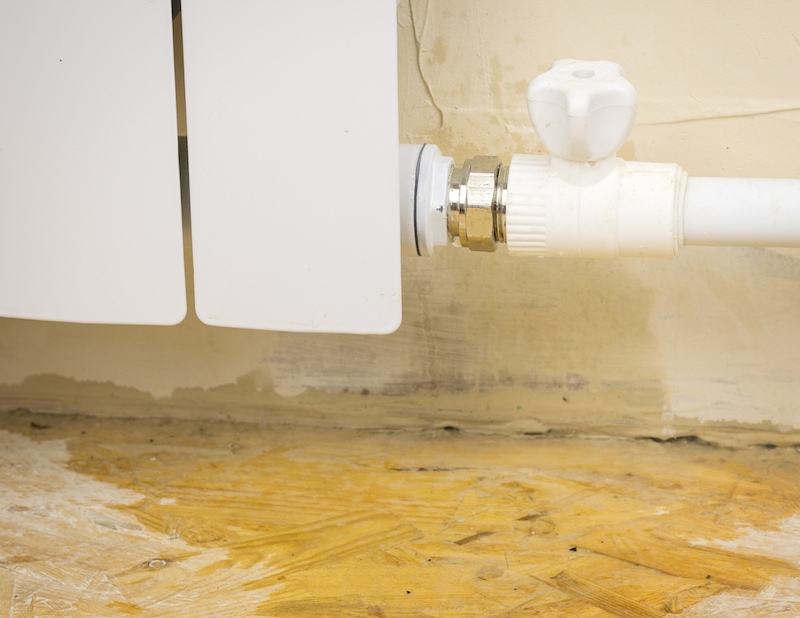The Residential Principal Typical Causes of Leak Problems: Thorough Investigation
The Residential Principal Typical Causes of Leak Problems: Thorough Investigation
Blog Article
Almost everyone may have his or her own conception about How to detect water leaks in your home.

Leakages not just cause waste of water however can likewise cause unnecessary damage to your home as well as advertise undesirable organic growth. Sadly, water leaks may go unnoticed because most of the pipework in our house is hidden. By comprehending and also looking for daily scenarios that create leaks, you can safeguard your residence from future leakages as well as unneeded damages. Today, we will certainly consider 6 leakage triggers that may be creating your pipelines to drip.
Immediate temperature level changes.
Extreme temperature modifications in our pipelines can create them to expand as well as contract suddenly. This expansion and also tightening may cause splits in the pipelines, particularly if the temperature are below freezing. If you maintained an eye on exactly how your plumbing functions, it would be best. The existence of the formerly mentioned circumstances often shows a high threat.
Rusty water supply
As time passes by, your plumbing system ages as well as deterioration such as rust may start eating away the pipes. This may be the cause of discoloration or bending on your pipes. This calls for an examination with your plumber promptly. Think about replacing the pipes because they are at a higher threat of deterioration than the more recent models if our plumbing system is old.
Faulty Pipe Joints
Pipeline joints can degrade over time, resulting in water leaks. If you have loud pipelines that make ticking or banging noises, specifically when the warm water is turned on, your pipe joints are probably under a lot of pressure.
Encroaching origins
The majority of water leakages start outside the house as opposed to inside it. If you see an unexpected decrease in water stress, claim in your tap, take time to head out and analyze your lawn. You might see wet spots or sinkholes in your lawn, and that could indicate that tree roots are attacking water lines causing water to permeate out. You can have your plumber look for intrusion, particularly if you have trees or bushes near your residential property.
Poor Water Connectors
At times, a leak can be caused by loose pipes as well as pipelines that supply your home appliances. Most of the time, shifting is what causes the loosened water Links. You may find in the case of a cleaning maker, a pipe may spring a leakage as a result of trembling during the spin cycle. In case of a water links leak, you might observe water running directly from the supply line or pools around your home appliances.
Clogged Drains
Obstructed drains might be aggravating as well as inconveniencing, but they can occasionally end up creating an overflow resulting in break pipes. Maintain removing any type of materials that may drop your drains that might obstruct them to avoid such aggravations.
All the above are reasons for leaks yet not all water leaks result from plumbing leakages; some leaks could come from roof covering leaks. All leaks must be fixed promptly to avoid water damage.
Leaks not just trigger waste of water yet can additionally create unneeded damage to your residence as well as advertise undesirable natural development. By recognizing and looking for everyday situations that cause leakages, you can safeguard your residence from future leaks and also unnecessary damages. Today, we will look at 6 leak triggers that might be causing your pipelines to trickle.
At times, a leak can be triggered by loosened hoses as well as pipelines that provide your appliances. In situation of a water links leakage, you may observe water running straight from the supply line or pools around your appliances.
How To Check For Water Leak In Your Home
How To Check for Leaks
The average household's leaks can account for nearly 10,000 gallons of water wasted every year and ten percent of homes have leaks that waste 90 gallons or more per day. Common types of leaks found in the home are worn toilet flappers, dripping faucets, and other leaking valves. These types of leaks are often easy to fix, requiring only a few tools and hardware that can pay for themselves in water savings. Fixing easily corrected household water leaks can save homeowners about 10 percent on their water bills.
To check for leaks in your home, you first need to determine whether you're wasting water and then identify the source of the leak. Here are some tips for finding leaks:
Take a look at your water usage during a colder month, such as January or February. If a family of four exceeds 12,000 gallons per month, there are serious leaks.
Check your water meter before and after a two-hour period when no water is being used. If the meter changes at all, you probably have a leak.
Identify toilet leaks by placing a drop of food coloring in the toilet tank. If any color shows up in the bowl after 10 minutes, you have a leak. (Be sure to flush immediately after the experiment to avoid staining the tank.)
Examine faucet gaskets and pipe fittings for any water on the outside of the pipe to check for surface leaks.
Undetected water leaks can happen without the home or business owner even realizing. If you suspect a water leak, but not able to find the source. It is time to contact a professional water leak detection service, The Leak Doctor.
How To Find a Water Leak In Your Home
https://www.leakdoctor.com/blog/How-To-Check-For-Water-Leak-In-Your-Home_AE197.html

We hope you liked our topic on How to Find Water Leaks. Thanks so much for spending some time to read through our blog. If you enjoyed reading our blog posting if you please do not forget to pass it around. Thank you for your time invested reading it.
Plumbing emergency? We're ready. Report this page